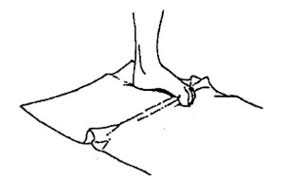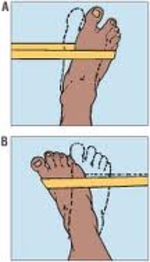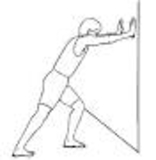What a relief! Finally a bunion surgery repair! This surgery has proven to be a relief for many people. However, with this surgery comes foot/ankle immobilization, and there are several impairments that can come from this extended immobilization. Impairments such as foot and ankle weakness, decreased range of motion of the foot and ankle joints, and myofascial trigger points in the calf muscles can come from this immobilization. Most important with this immobilization is the decreased range of motion of the affect big toe joint (first metatarsal phalangeal joint). Regaining motion around this joint is vital for proper foot function.
At Eagle Rock Physical Therapy we understand the side-effects from an immobilized ankle/foot, especially the big toe joint – and how to improve the range of motion of the affect joints. We work to increased the range of motion, decrease the impairments, and increase function in your life. Below are a few of the exercises you may want to start under the guidance of your physican or us, here, at Eagle Rock Physical Therapy.
If you are having pains after bunion surgery, or problems with foot/ankle range of motion, we would love to restore your life!
FOOT INTRINSICS
 Put your foot on a towel and try to “roll” up the towel with your feet. There are two benefits to this exercise:
Put your foot on a towel and try to “roll” up the towel with your feet. There are two benefits to this exercise:
This exercise has a lot of the same effect – except it promotes big toe extension.
ANKLE INVERSION/EVERSION EXERCISES
 Attach a piece of exercise theraband around either side of the foot. Move the foot against the resistance of the threaband. Complete 3 sets of 10 repetitions, 2-3 times a day.
Attach a piece of exercise theraband around either side of the foot. Move the foot against the resistance of the threaband. Complete 3 sets of 10 repetitions, 2-3 times a day.
GASTROC/CALF MUSCLE STRETCH
 There is an ailment caused “equines deformity.” This usually comes from a shortened gastc which usually comes from shortened calf (gastroc muscles). Stretching this muscle is not easy – but can be done at home – and should be done at home. This is good for plantar fasciitis, general ankle pain, and forefoot pain.
There is an ailment caused “equines deformity.” This usually comes from a shortened gastc which usually comes from shortened calf (gastroc muscles). Stretching this muscle is not easy – but can be done at home – and should be done at home. This is good for plantar fasciitis, general ankle pain, and forefoot pain.